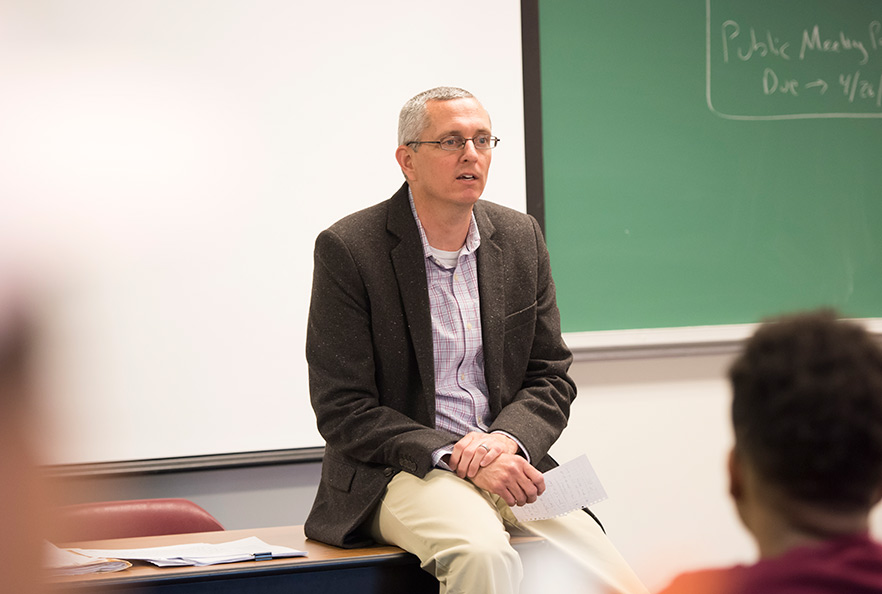Research decodes ‘cities of color’ trend

Research uncovered by a Winston-Salem State University (WSSU) faculty member is helping to shed light on a growing trend of urban segregation among newly created cities.
Last fall, Dr. Russell Smith, associate professor of geography at WSSU, completed a survey of 45 new “cities of color,” municipalities that were created between 1990 and 2010 with a majority minority population.
“No one had done anything on this subject before,” Smith says. “Media attention in recent years has focused on higher-profile issues of race and place in existing municipalities. The shift toward cities of color deserves attention, too.”
The research, which will be published in Smith’s upcoming book, recently garnered interest from the London School of Economics, which published an article from Smith in its U.S. policy blog.
Smith, a faculty member in WSSU’s Department of History, Politics and Social Justice since 2008, says his research runs counter to the popular media view of new cities as enclaves of the white and wealthy.
He says his research shows that many of the cities formed as a reaction to direct or indirect racism under provision of public services. In surveys, the municipalities commonly listed as their main motivators for incorporation county neglect and “underbounding,” when impoverished communities of color are excluded from the boundaries of cities, as the main motivators for seeking incorporation.
Smith says an example is Green Level, a town of about 2,100 residents in Alamance County that incorporated in 1990 after the area experienced failing septic systems. Neighboring Haw River provided an alternative to incorporation but annexation was never initiated. Haw River, a former mill town that was incorporated in 1973, is 76 percent white, Green Level is 73 percent African American.
“The best part of the research are the stories and the glimpse they offer into the future urban and political geography of the country as the United States becomes more diverse,” he says.
Other cities he’s studied include:
- Mobile City, Texas, a majority Hispanic town that incorporated in 1990 to legalize and tax alcohol sales. It consists of a mobile home park, a taqueria and a liquor store.
- Cutler Bay, Florida, a city of 40,000 residents in Miami-Dade County. More than half of the population is Hispanic. The city was incorporated in the wake of Hurricane Andrew.
Smith worked as an urban planner before pursuing his doctorate in geography from the University of North Carolina at Greensboro. He teaches several courses within the Department of History, Politics and Social Justice, including Introduction to Geography (GEO 2311) and Introduction to Geographic Information Systems (GEO 2315), which focuses on the concept of analyzing data geographically.
Next, Smith says hopes to receive funding for collaborative research and field studies to interview municipal leaders and residents to understand more of the history and dynamics of these new cities.
